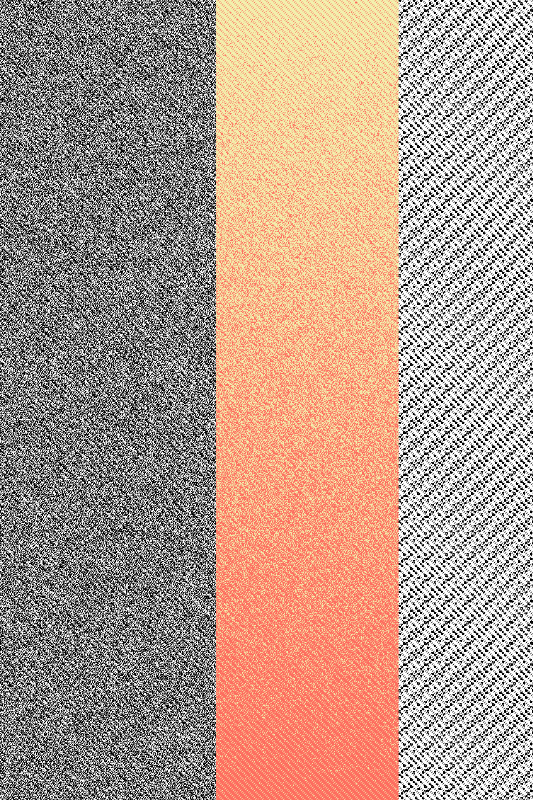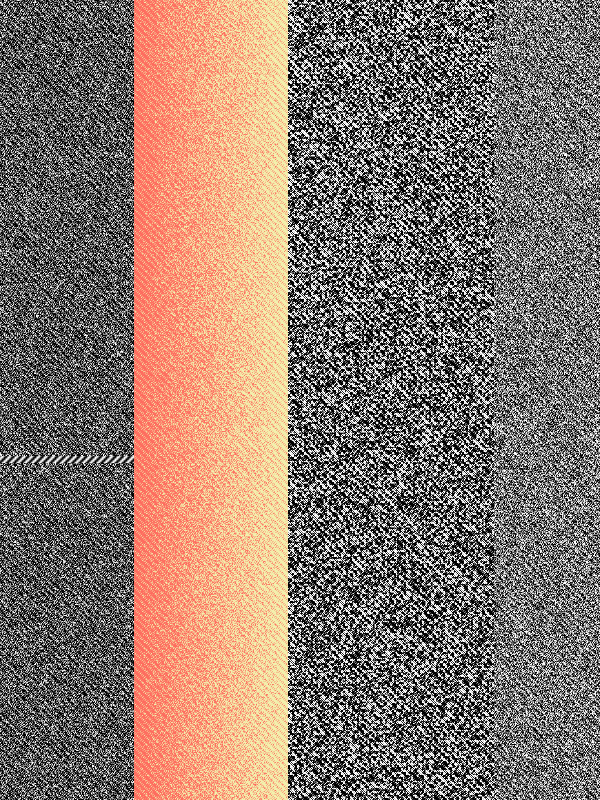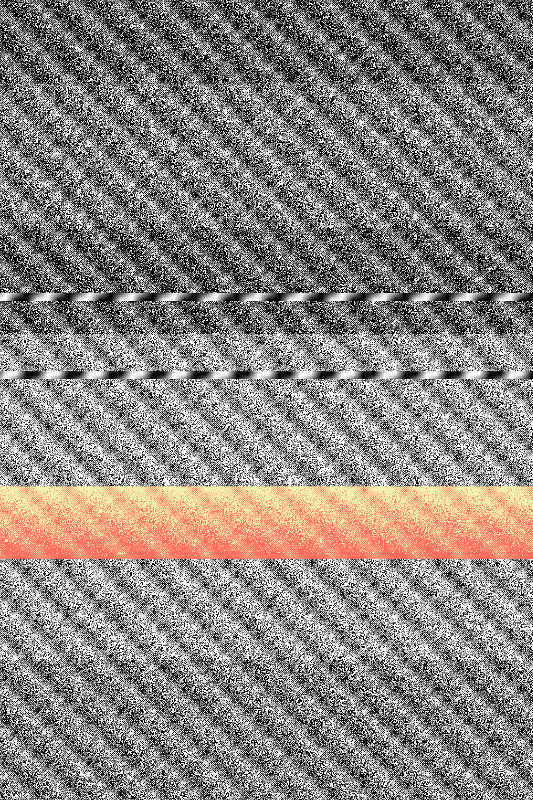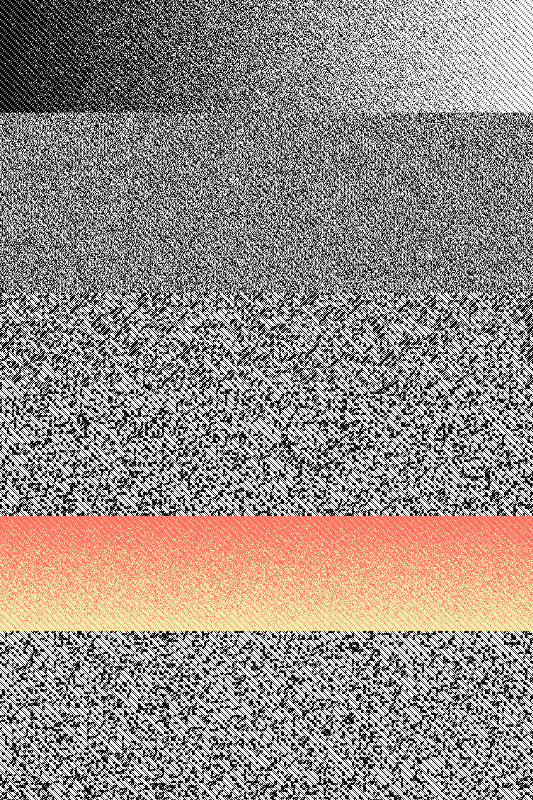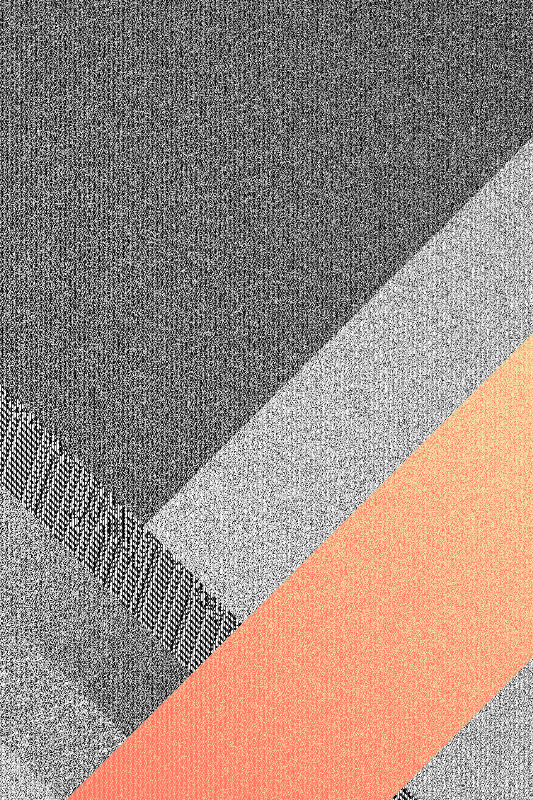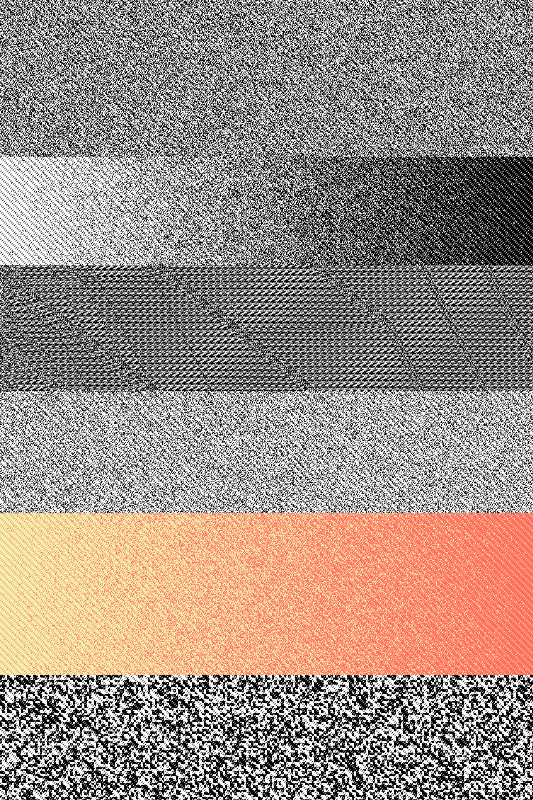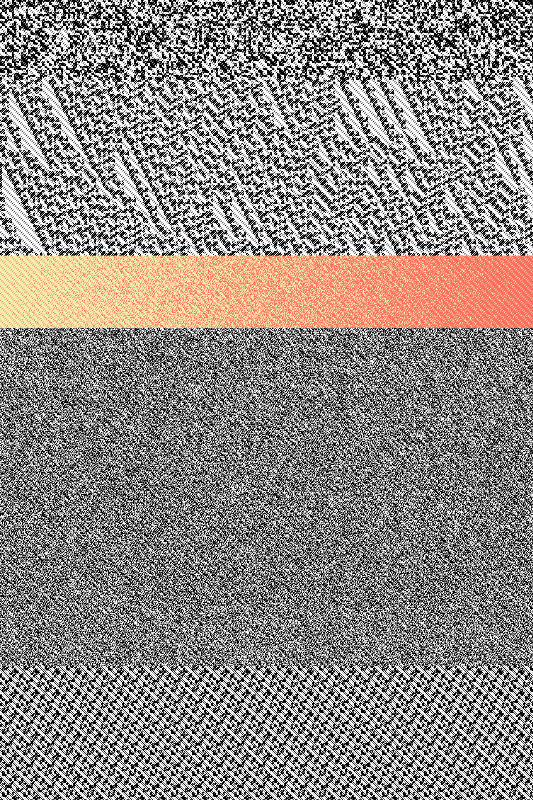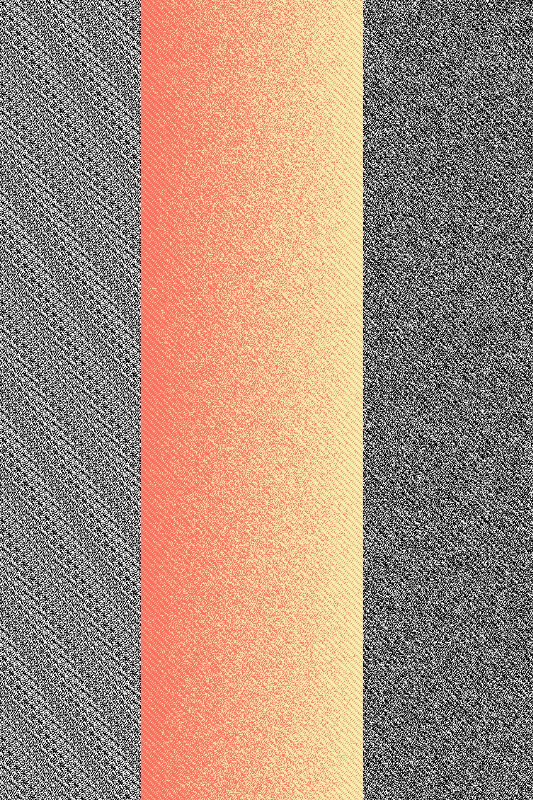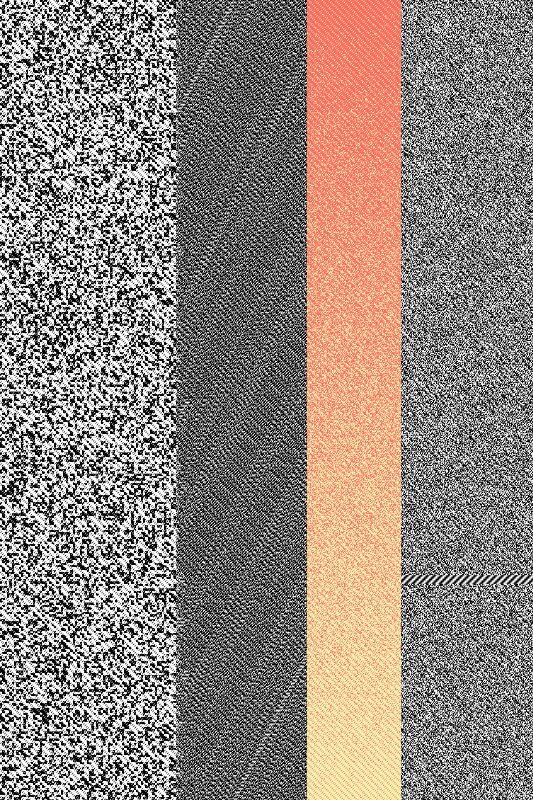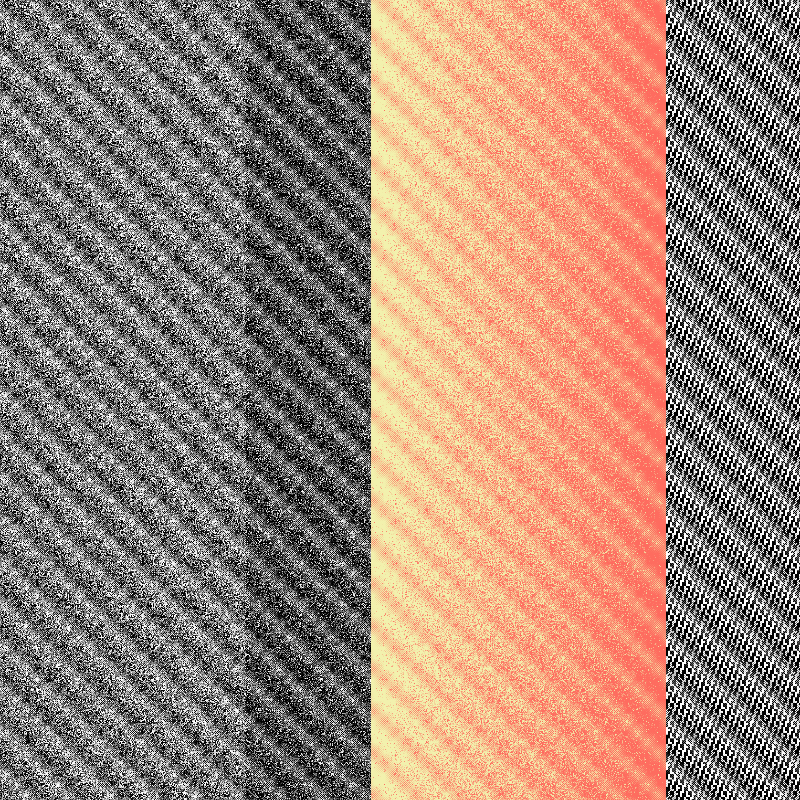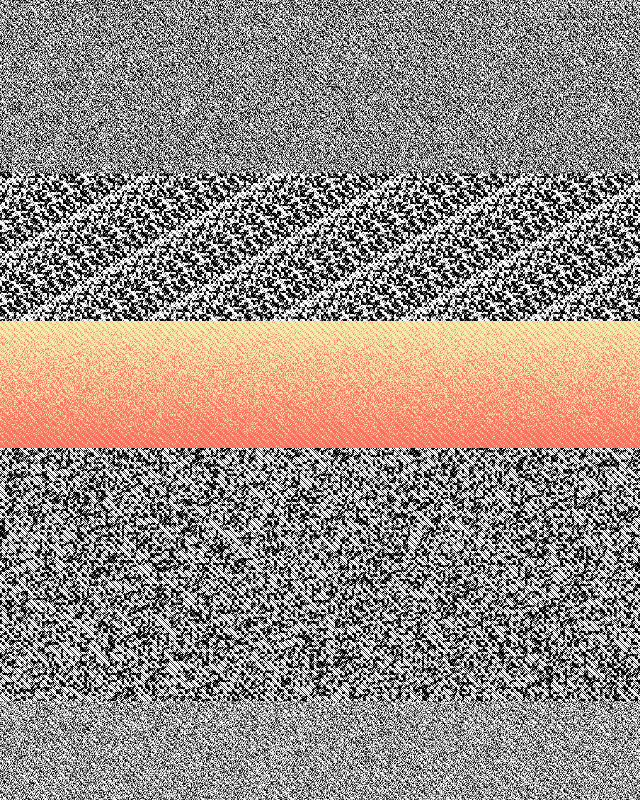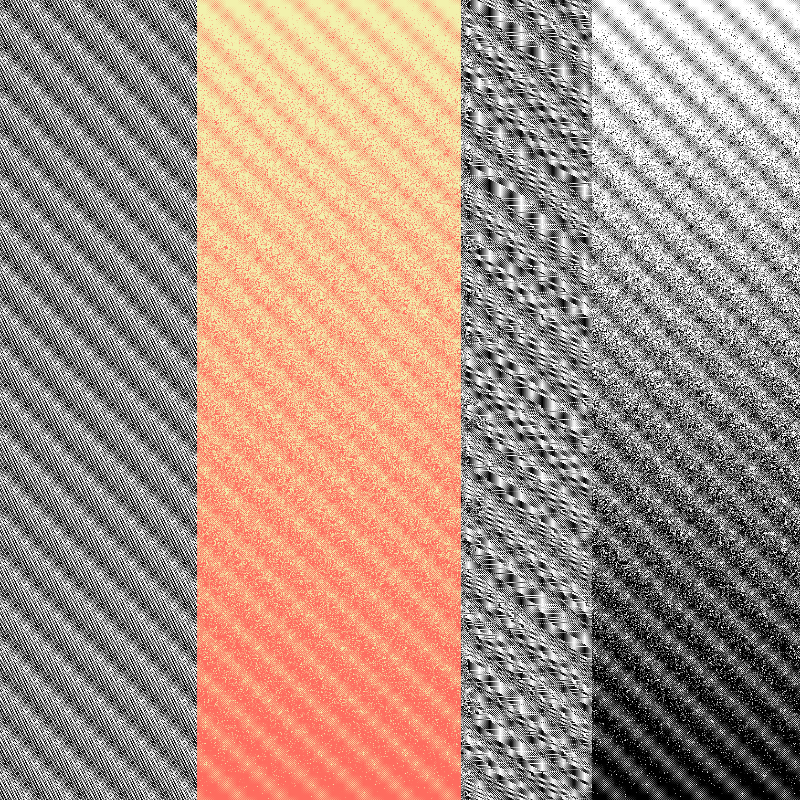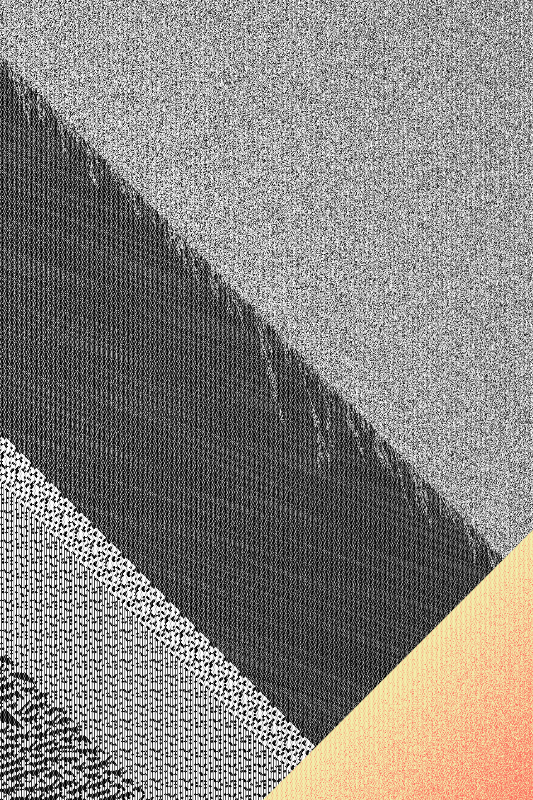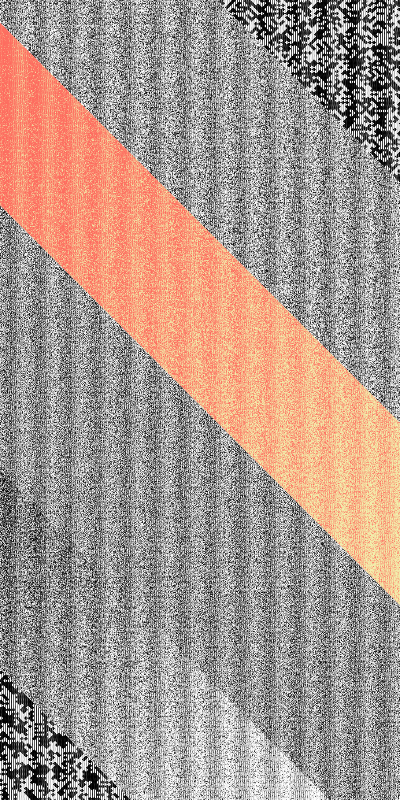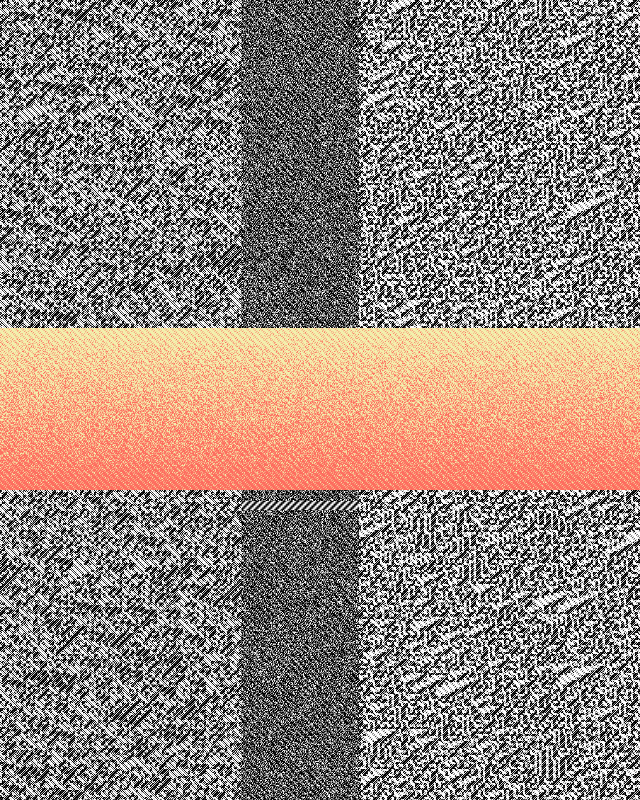by _pixelform_
Theories of Everything: Generative Series
IPFS
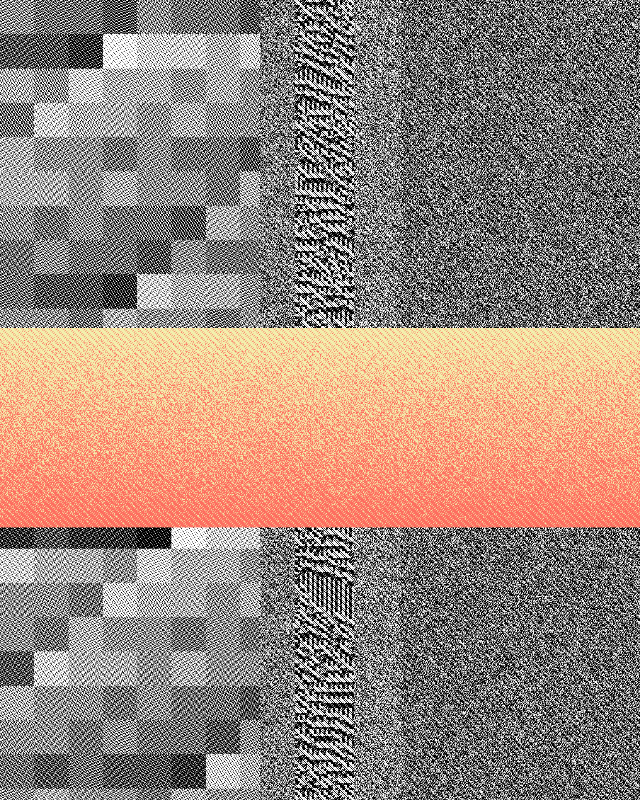
16 November 2022•TEZOS•IPFS
This generative token continues the Theories of Everything body of work by Phillip David Stearns. The first series of eight works in the Theories of Everything project are physical editions, featuring computationally designed textiles, cut and sewn, and stretched over canvased wood stretchers.
The fabrics of those works and the designs in this generative edition are expressions of algorithms that simulate entropic decay. To a large extent, they are products of code that dutifully and predictably obeys the laws of thermodynamics. Cellular automata, linear feedback shift registers, and pseudo-random number generators execute the binary dance of life and death and the infinite states between.
It's no coincidence that entropy gives direction to the arrow of time; building layer upon layer of noise upon noise, imbuing our lives with meaning through the churning of endless chaos. Even the universe will experience a death of its own. As its energy disperses, its warmth will fade inevitably to cold; absolute in its stillness.
---
Notes:
- Previews of this work are downsampled and contain a range of unintentional aliasing artifacts. To view these works are intended, please run the work in its own tab or window and press 's' to save a full resolution png.
- Collectors wishing to commission a physical edition of the work may contact the artist directly.
---
Technical Details:
- Each "Theory" is composed of a number of sections within overlapping layers. The maximum number of layers is 4 (rare) and the minimum is 1 (common).
- Sections contain a single design and a set of binding structures. Designs have one of three formats: solid, gradient, or sampler.
- Solid format designs can be generated from Linear Feedback Shift Register, Random Noise, Cellular Automata, or Pseudoku (a sudoku puzzle generator) design algorithms. Gradients can only be generated using Random Noise. Samplers are only generated using Pseudoku patterns.
- These designs are meant to be woven, so this means they need to be paired with binding structures. Some of the designs are scaled up and paired with structures like opposing twills or satin. Most common is for 8 harness structures to be used.
- Scaling can allow for the structures to be featured more prominently in rendering the designs. Gradient formats are never scaled up always use statin8-7 and satin8-1 for black and white. Samplers are also never scaled up and always use pseudoku generated structures. Depending on the pattern of the design, solid formats can be scaled either 1x, 8x or 9x. 1x scaling always uses the same structures as Gradients. 8x scaling feature either or both twill and or satin structures. 9x will use opposing pseudoku structures.
- Rendering the "Theory" involves rendering each design for each section of each layer. Designs are rendered using their weaving structures based on their scale factor. Each "Theory" is therefore is a complex, and layered weaving.
- The colored "neon" gradient appears only in the top-most layer, and should appear always and only once per "Theory".
The fabrics of those works and the designs in this generative edition are expressions of algorithms that simulate entropic decay. To a large extent, they are products of code that dutifully and predictably obeys the laws of thermodynamics. Cellular automata, linear feedback shift registers, and pseudo-random number generators execute the binary dance of life and death and the infinite states between.
It's no coincidence that entropy gives direction to the arrow of time; building layer upon layer of noise upon noise, imbuing our lives with meaning through the churning of endless chaos. Even the universe will experience a death of its own. As its energy disperses, its warmth will fade inevitably to cold; absolute in its stillness.
---
Notes:
- Previews of this work are downsampled and contain a range of unintentional aliasing artifacts. To view these works are intended, please run the work in its own tab or window and press 's' to save a full resolution png.
- Collectors wishing to commission a physical edition of the work may contact the artist directly.
---
Technical Details:
- Each "Theory" is composed of a number of sections within overlapping layers. The maximum number of layers is 4 (rare) and the minimum is 1 (common).
- Sections contain a single design and a set of binding structures. Designs have one of three formats: solid, gradient, or sampler.
- Solid format designs can be generated from Linear Feedback Shift Register, Random Noise, Cellular Automata, or Pseudoku (a sudoku puzzle generator) design algorithms. Gradients can only be generated using Random Noise. Samplers are only generated using Pseudoku patterns.
- These designs are meant to be woven, so this means they need to be paired with binding structures. Some of the designs are scaled up and paired with structures like opposing twills or satin. Most common is for 8 harness structures to be used.
- Scaling can allow for the structures to be featured more prominently in rendering the designs. Gradient formats are never scaled up always use statin8-7 and satin8-1 for black and white. Samplers are also never scaled up and always use pseudoku generated structures. Depending on the pattern of the design, solid formats can be scaled either 1x, 8x or 9x. 1x scaling always uses the same structures as Gradients. 8x scaling feature either or both twill and or satin structures. 9x will use opposing pseudoku structures.
- Rendering the "Theory" involves rendering each design for each section of each layer. Designs are rendered using their weaving structures based on their scale factor. Each "Theory" is therefore is a complex, and layered weaving.
- The colored "neon" gradient appears only in the top-most layer, and should appear always and only once per "Theory".
Work by Phillip David Stearns, grizzled electronic art veteran.
128 EDITIONS
•0 RESERVES
minted
15 / 128
fixed price
128 TEZ
